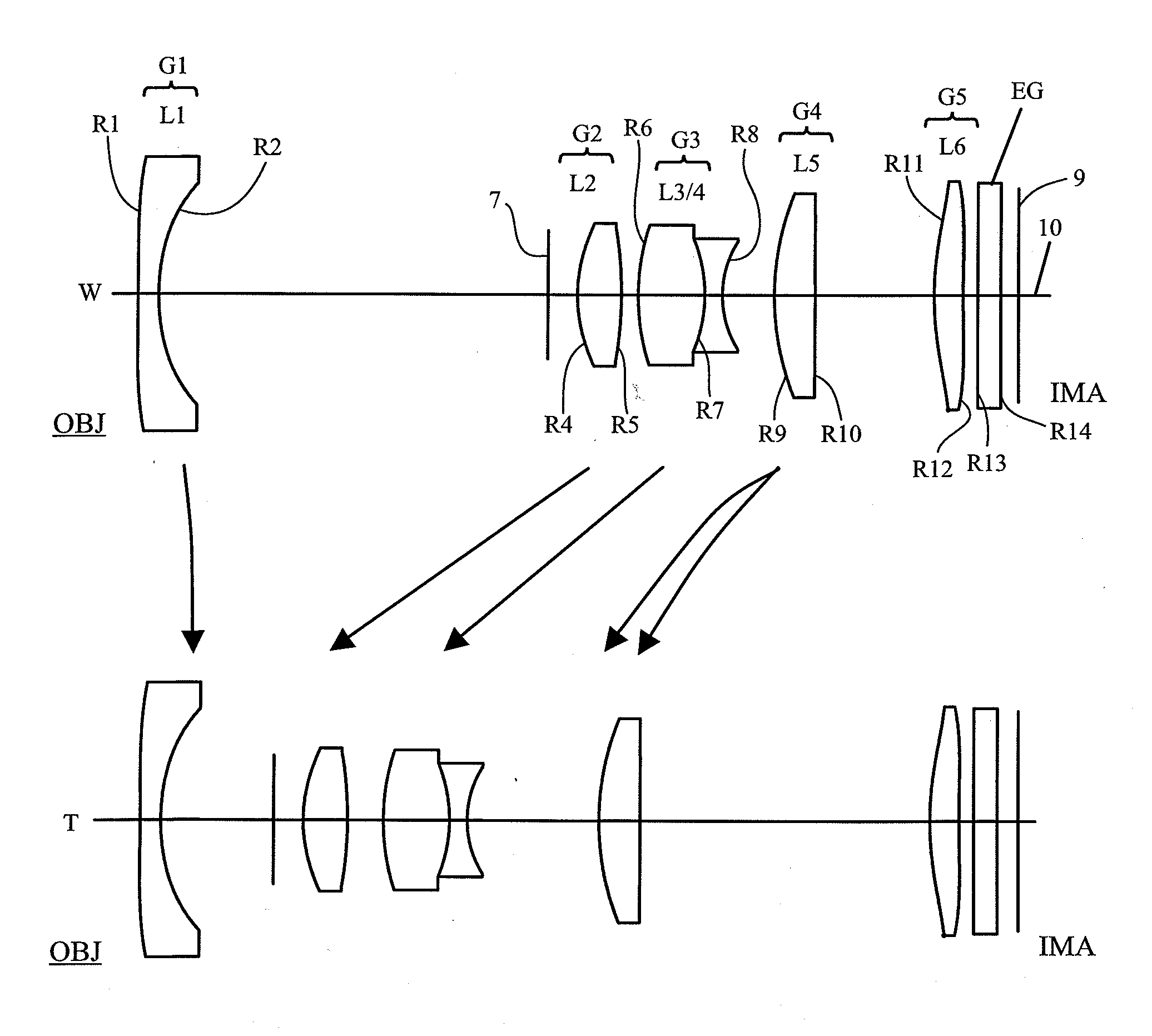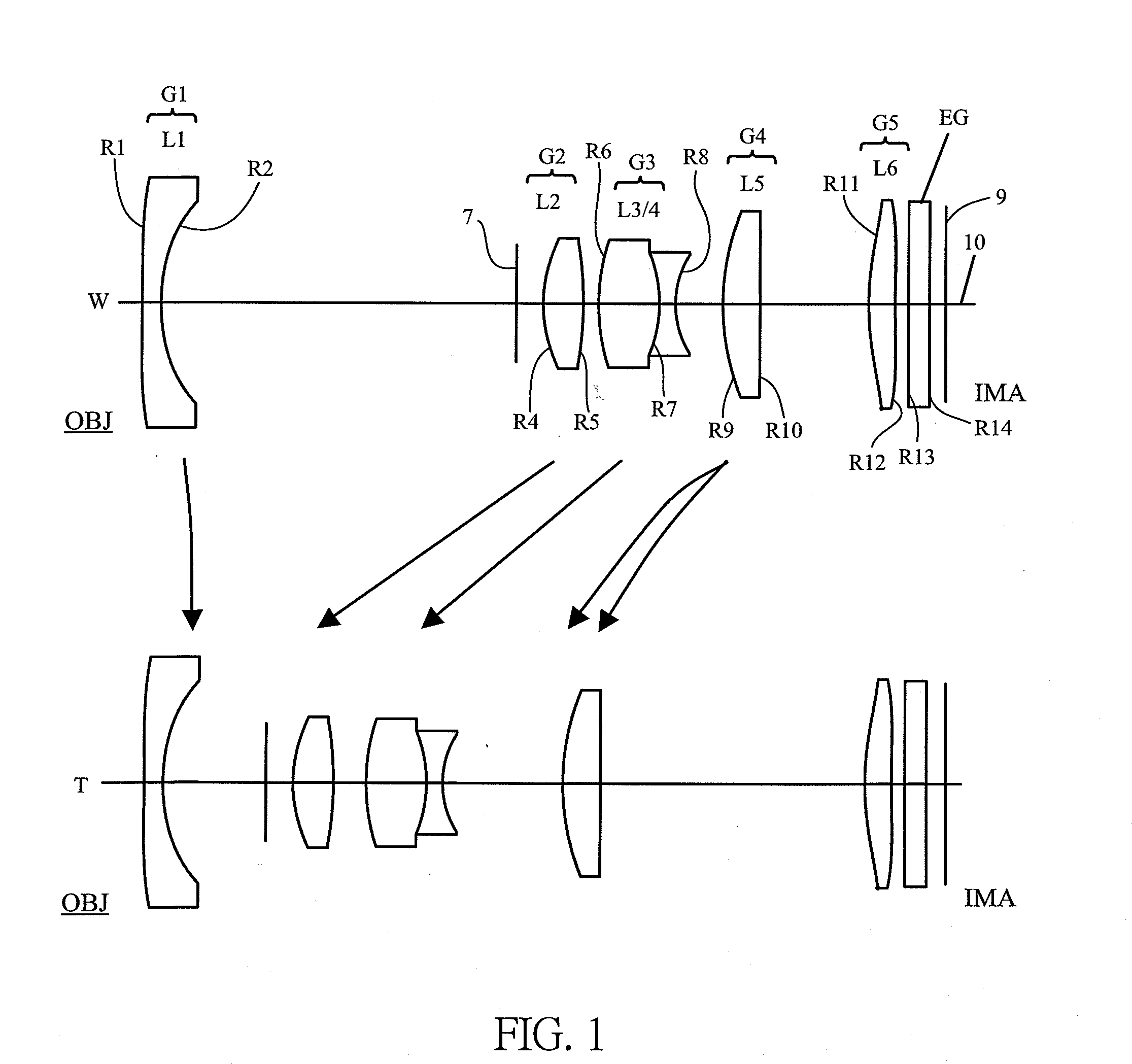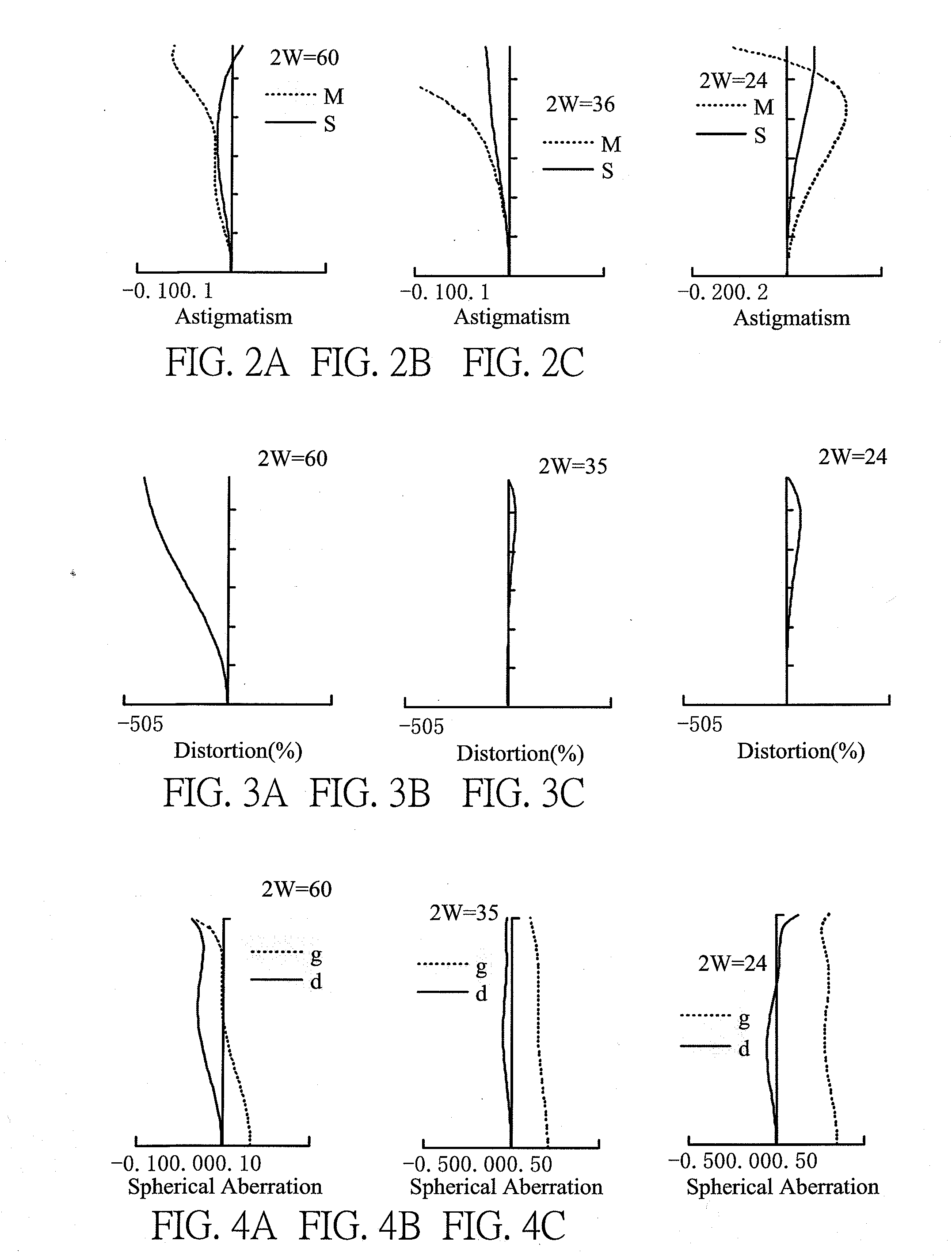Zoom lens system
- Summary
- Abstract
- Description
- Claims
- Application Information
AI Technical Summary
Benefits of technology
Problems solved by technology
Method used
Image
Examples
numerical embodiment 1
[0053]FIGS. 2A-6C illustrate various aberrations generated by the present zoom lens system according to Numerical Embodiment 1, wherein FIGS. 2A-2C are respective graphic representations of astigmatism aberration at the wide-angle end, the intermediate position and the telephoto end, FIGS. 3A-3C are respective graphic representations of distortion aberration in the different three zooming positions, FIGS. 4A-4C are respective graphic representations of spherical aberration in the different three zooming positions, FIGS. 5A-5C are respective graphic representations of chromatic aberration in the different three zooming positions, and FIGS. 6A-6C are respective graphic representations of coma aberration in the different three zooming positions.
[0054]In these graphs, “2w” denotes a view angle. In FIGS. 2A-2C, “M” denotes a meridional plane and “S” denotes a sagittal plane. In FIGS. 4A-4C, “g” denotes a spectral g-line and “d” denotes a spectral d-line.
[0055]Numerical values of the comp...
numerical embodiment 2
[0058]FIGS. 7A-11C illustrate various aberrations generated by the present zoom lens system according to Numerical Embodiment 2, wherein FIGS. 7A-7C are respective graphic representations of astigmatism aberration at the wide-angle end, the intermediate position and the telephoto end, FIGS. 8A-8C are respective graphic representations of distortion aberration in the different three zooming positions, FIGS. 9A-9C are respective graphic representations of spherical aberration in the different three zooming positions, FIGS. 10A-10C are respective graphic representations of chromatic aberration in the different three zooming positions, and FIGS. 11A-11C are respective graphic representations of coma aberration in the different three zooming positions.
[0059]Numerical values of the component lenses of the present zoom lens system according to Numerical Embodiment 2 are shown in Data Table 4 given below:
DATA TABLE 4Surface (i)Ri (mm)D (mm)NdVdR1−140.0540.71.5798463.01R25.452477D1aperture∞0...
numerical embodiment 3
[0062]FIGS. 12A-6C illustrate various aberrations generated by the present zoom lens system according to Numerical Embodiment 3, wherein FIGS. 12A-12C are respective graphic representations of astigmatism aberration at the wide-angle end, the intermediate position and the telephoto end, FIGS. 13A-13C are respective graphic representations of distortion aberration in the different three zooming positions, FIGS. 14A-14C are respective graphic representations of spherical aberration in the different three zooming positions, FIGS. 15A-15C are respective graphic representations of chromatic aberration in the different three zooming positions, and FIGS. 16A-16C are respective graphic representations of coma aberration in the different three zooming positions.
[0063]Numerical values of the component lenses of the present zoom lens system according to Numerical Embodiment 3 are shown in Data Table 7 given below.
DATA TABLE 7Surface (i)Ri (mm)D (mm)NdVdR142.557780.71.63960963.01R26.2169740.7ap...
PUM
 Login to View More
Login to View More Abstract
Description
Claims
Application Information
 Login to View More
Login to View More - R&D
- Intellectual Property
- Life Sciences
- Materials
- Tech Scout
- Unparalleled Data Quality
- Higher Quality Content
- 60% Fewer Hallucinations
Browse by: Latest US Patents, China's latest patents, Technical Efficacy Thesaurus, Application Domain, Technology Topic, Popular Technical Reports.
© 2025 PatSnap. All rights reserved.Legal|Privacy policy|Modern Slavery Act Transparency Statement|Sitemap|About US| Contact US: help@patsnap.com



